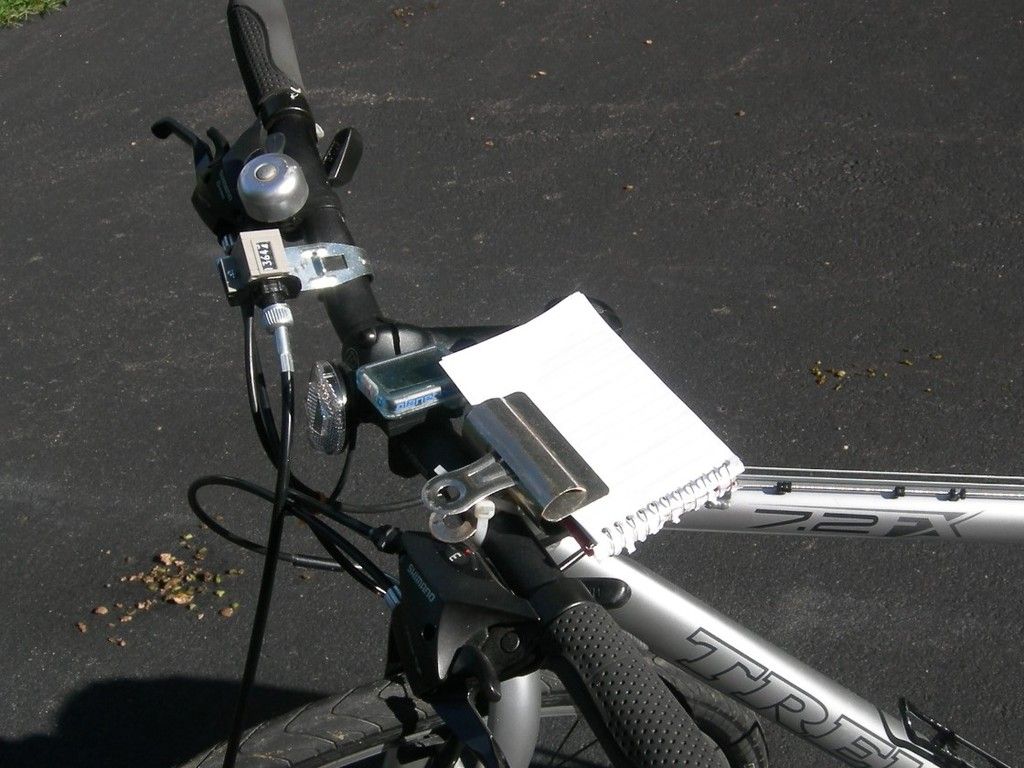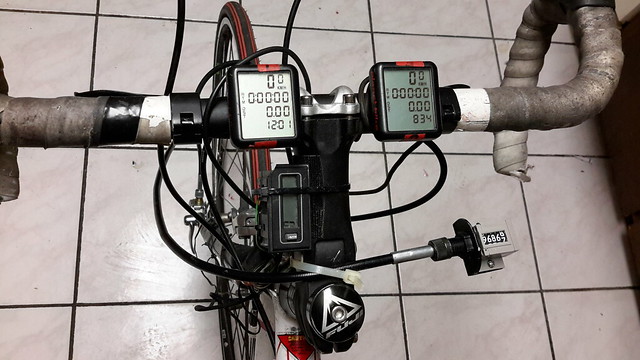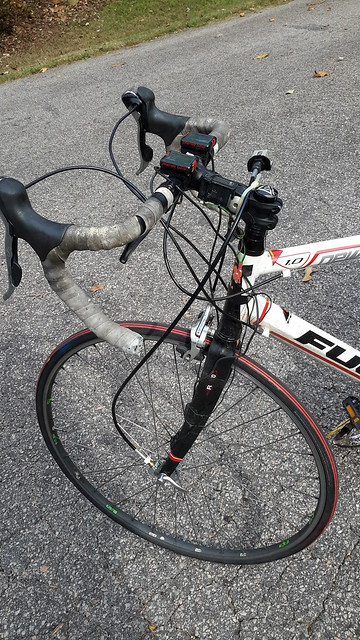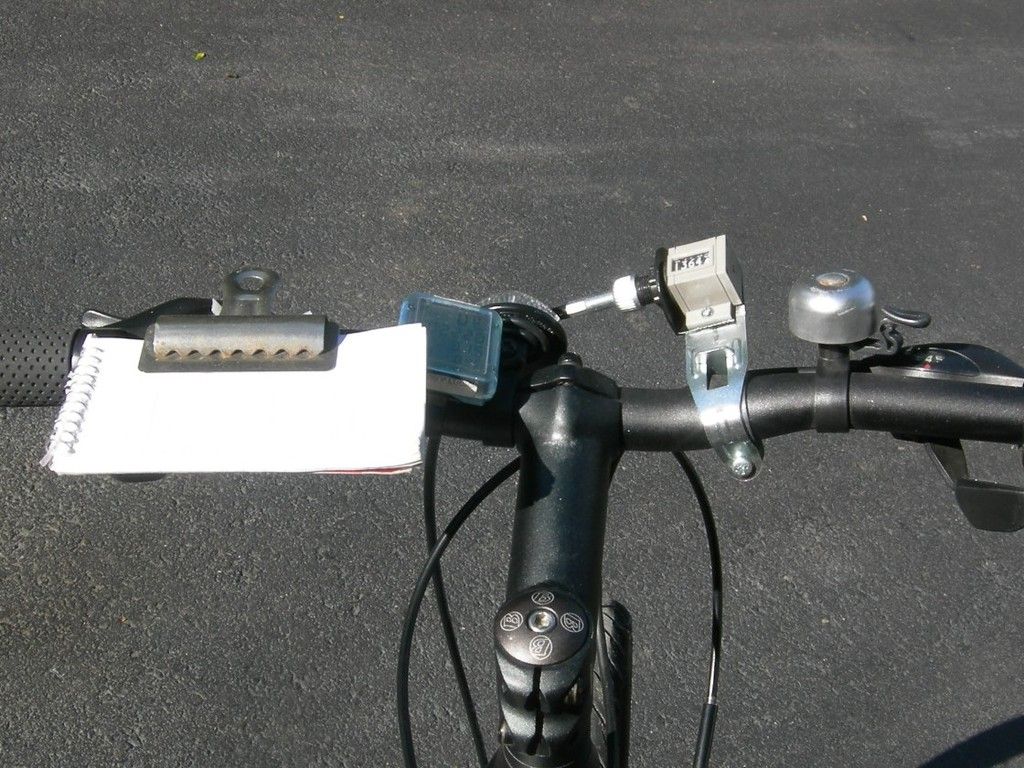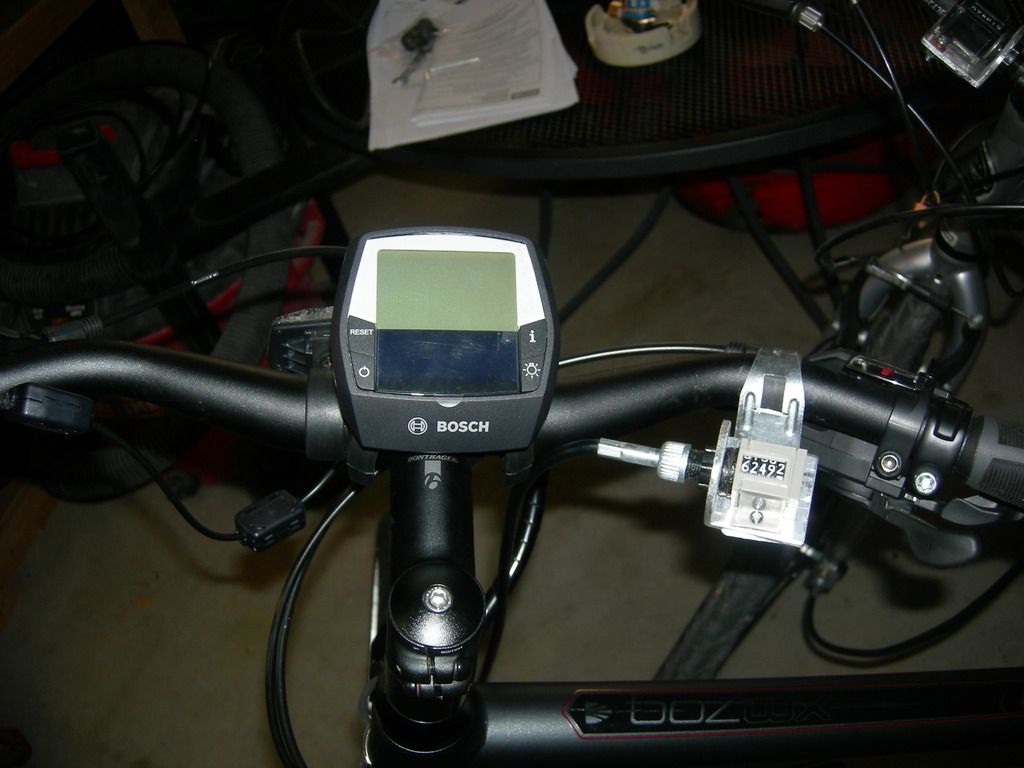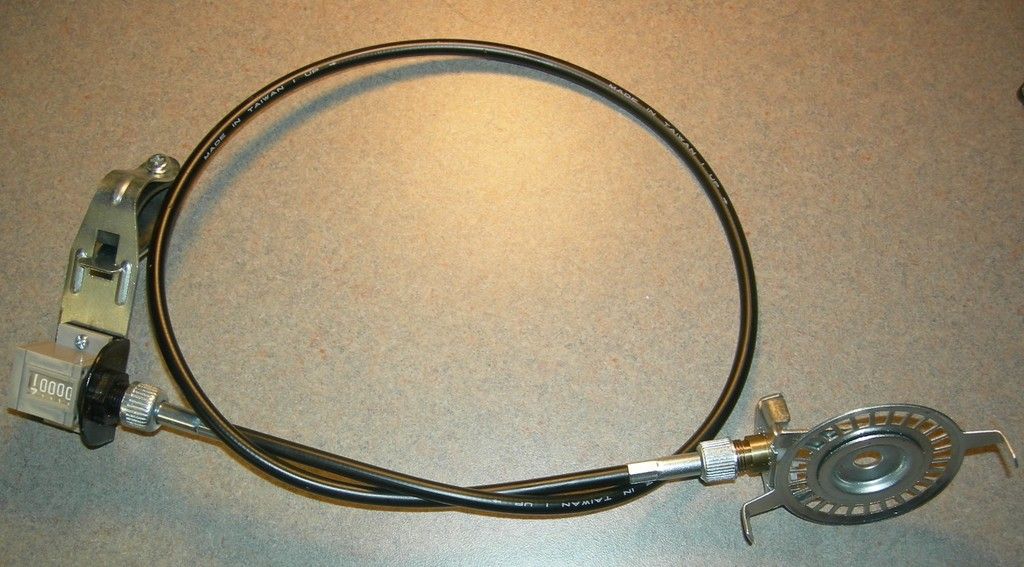
I have really enjoyed using my old Jones-Oerth-Lacroix Counter (JOL). Having the Veeder-Root counter mounted on the handlebar has made reading the small counter numbers so much easier – like all of us my eyes aren’t getting any younger.
At the end of last year my prized old JOL had seen better days. I was keeping the counter connected to the cable with some electrical tape and wire. The glue that was holding it together just didn’t last.
In looking for replacement parts I struck out contacting Laurent Lacroix and Pete Riegel . Couldn’t find current contact information for Steven Oerth. At the beginning of the New Year I started periodically searching the internet for other possible replacement parts. The focus of many searches concentrated on parts for the important connection between the counter and cable. After considerable searching I eventually found a couple of suppliers for the necessary components; old style metal gear drive, speedometer cable, mounting bracket and parts to connect the cable to the Veeder Root counter. Over the last few months I’ve now built 10 handlebar mounted 5 digit Jones Counters, including a couple that mount on the right side of the wheel hub.
Starting in March, at the beginning of the New York measuring season, I’ve been using one of the new handlebar counters for 27 courses of varying lengths with absolutely no hiccups. For measurements I would calibrate and use two counters for comparison, one old style hub type counter and my new handlebar counter. For a few of the measurements I used two counters at once, one mounted on the left of the wheel hub and the other on the right. Additionally I always got secondary comparison data from a second rider who used an old style hub counter. Spot on great results!
In June I sent out a few counters for other measurers to test them out. These measurers have also had similar good luck with the handlebar counters. The counters have a solid mechanical connection from the cable to the counter, not glued like the JOL Counter. I think the second best element of the new counter is the off the shelf stock bicycle handlebar bracket, which is a bit sturdier than Velcro straps used for my old JOL.
Recently I was very surprised and happy to have found a supplier with a substantially lower price for new Veeder Root counters. Now I’m trying to decide on building more counters to offer for sale to course measurers.
